How to Train Clients With Pancreatitis (Step-by-Step Guide)
Learning how to train clients with pancreatitis can add depth to your personal training services. However, it’s essential to possess the appropriate knowledge and tools to effectively train these clients. Utilizing specific features of personal training software can help in this journey. Discover how to train clients with pancreatitis and the tools you need in this comprehensive guide.
- Training clients with pancreatitis involves a delicate approach, focusing on gentle exercise routines that don’t strain their energy levels or exacerbate symptoms.
- Most clients with pancreatitis will benefit from light, low-impact exercises that aid digestion and overall health without causing undue stress to their body.
- Leveraging workout and assessment software can help prioritize your client’s safety while guiding them towards their fitness goals without complications.
Training special populations, like clients with pancreatitis, offers personal trainers an enriching way to diversify their fitness business.
To effectively train clients with pancreatitis, it’s vital to understand the condition, along with having the right tools to facilitate safe and effective training; that’s where personal training software proves invaluable. By using the features of the best online personal training software, you can train clients with pancreatitis in a manner that supports their health, not works against it.

Experience the premier personal training software from Exercise.com by booking a demo today!
Understanding Pancreatitis: Causes, Symptoms, and Treatment Options
Pancreatitis is a medical condition characterized by inflammation of the pancreas. It can be acute or chronic, and can have a significant impact on a person’s daily life. As a fitness professional, it is important to understand the causes, symptoms, and treatment options of pancreatitis in order to design an effective exercise program for clients with this condition.
Pancreatitis can be caused by a variety of factors, including alcohol abuse, gallstones, certain medications, and genetic predisposition. The symptoms of pancreatitis may include abdominal pain, nausea, vomiting, and fever. In severe cases, it can lead to complications such as pancreatic necrosis or chronic pancreatitis.
The treatment options for pancreatitis will vary depending on the severity and type of the condition. In some cases, hospitalization and intravenous fluids may be necessary to manage the symptoms. Pain relievers, enzyme supplements, and dietary modifications may also be recommended by healthcare providers to support pancreatic health.
As a fitness professional, it is crucial to work closely with clients’ healthcare providers to ensure their exercise program aligns with their treatment plan and does not exacerbate their symptoms.
It is important to note that individuals with pancreatitis should avoid consuming alcohol, as it can further damage the pancreas and worsen symptoms. Additionally, smoking has been linked to an increased risk of developing pancreatitis and can hinder the healing process. Quitting smoking is highly recommended for individuals with pancreatitis to improve their overall health and reduce the risk of complications.
The Importance of Exercise in Managing Pancreatitis
Exercise plays a vital role in managing pancreatitis by improving overall health and well-being. Regular physical activity can help reduce inflammation, boost immune function, promote weight management, and enhance mental health.
However, it is important to note that individuals with pancreatitis may have different exercise tolerance levels depending on the severity of their condition. Therefore, customization and monitoring of exercise intensity is essential to ensure safety and effectiveness.
Prioritizing exercise modifications, patient education, and a multidisciplinary approach are key to successfully training clients with pancreatitis.
One important consideration when designing an exercise program for individuals with pancreatitis is to focus on low-impact activities. High-impact exercises, such as running or jumping, can put excessive strain on the pancreas and may exacerbate symptoms. Instead, activities like swimming, cycling, or walking can provide cardiovascular benefits without placing undue stress on the pancreas.
In addition to cardiovascular exercise, incorporating strength training into the exercise routine can be beneficial for individuals with pancreatitis. Building muscle strength can help improve overall physical function and support the body’s ability to manage inflammation. However, it is crucial to start with light weights and gradually increase intensity to avoid overexertion and potential complications.
Designing an Exercise Program for Clients with Pancreatitis
…… (continue covering all the subheadings in a similar manner) …
Designing an Exercise Program for Clients with Pancreatitis
When designing an exercise program for clients with pancreatitis, it is important to consider their individual needs and limitations. Pancreatitis is a condition characterized by inflammation of the pancreas, which can cause abdominal pain, digestive issues, and fatigue. Therefore, it is crucial to tailor the exercise program to their specific symptoms and abilities.
First and foremost, it is essential to consult with the client’s healthcare provider before starting any exercise program. The healthcare provider can provide valuable insights into the client’s condition, any restrictions or precautions that need to be taken, and any specific exercises that should be avoided. This collaboration ensures that the exercise program is safe and effective for the client.
Additionally, it is important to focus on low-impact exercises that minimize strain on the abdomen and digestive system. Gentle activities such as walking, swimming, and cycling can be beneficial for clients with pancreatitis. These exercises help improve cardiovascular health, increase endurance, and promote overall well-being without putting excessive stress on the pancreas.
Incorporating flexibility exercises into the program is also crucial. Stretching exercises can help improve range of motion, reduce muscle tension, and alleviate any discomfort caused by pancreatitis. It is important to emphasize proper form and technique during stretching exercises to prevent any strain or injury.
Furthermore, it is recommended to start with shorter exercise sessions and gradually increase the duration and intensity over time. This gradual progression allows the client’s body to adapt and prevents overexertion. Regular monitoring of the client’s symptoms and progress is essential to ensure that the exercise program remains appropriate and beneficial.
Lastly, it is important to educate clients with pancreatitis about the importance of listening to their bodies and taking breaks when needed. Encouraging them to stay hydrated and maintain a balanced diet can also support their overall health and well-being.
In conclusion, designing an exercise program for clients with pancreatitis requires careful consideration of their individual needs and limitations. Collaboration with healthcare providers, focusing on low-impact exercises, incorporating flexibility exercises, gradual progression, and promoting self-care are key elements in creating a safe and effective exercise program for these clients.
Expert Insights: Tips from Fitness Professionals on Training Clients with Pancreatitis
When it comes to training clients with pancreatitis, it is crucial to seek guidance and insights from experts in the field. Experienced fitness professionals who have worked with individuals with pancreatitis can provide valuable tips to ensure a safe and effective exercise program.
Some key tips from fitness professionals include:
- Collaborate with healthcare providers to obtain a thorough understanding of the client’s condition and any necessary precautions or limitations.
- Monitor intensity and duration of exercise carefully, adjusting as needed based on individual symptoms and response.
- Encourage a well-balanced approach to exercise, incorporating strength training, cardiovascular workouts, flexibility exercises, and core strengthening.
- Utilize low-impact exercises to minimize stress on the pancreas and surrounding organs.
- Regularly communicate with the client to address any concerns, questions, or changes in their condition.
By following these expert insights, fitness professionals can provide effective training programs tailored to the unique needs and limitations of clients with pancreatitis.In conclusion, training clients with pancreatitis requires a comprehensive understanding of the condition, its impact on exercise tolerance, and appropriate modifications to ensure safety and effectiveness. By following a multidisciplinary approach, collaborating with healthcare providers, and utilizing expert insights, fitness professionals can provide guidance, support, and motivation to clients with pancreatitis on their fitness journey. With a carefully designed exercise program and proper monitoring, clients with pancreatitis can improve their overall health, manage symptoms, and enhance their quality of life.
It is also important for fitness professionals to educate themselves about the specific dietary considerations for clients with pancreatitis. Nutrition plays a crucial role in managing this condition, and understanding the impact of certain foods on pancreatic health can help guide exercise recommendations.
What is the best exercise for pancreatitis?
When it comes to pancreatitis, it is crucial to prioritize rest and recovery. Engaging in light physical activities such as gentle stretching, walking, or yoga can be beneficial to maintain mobility and prevent muscle stiffness. However, it is important to consult with a healthcare professional before starting any exercise program, as the severity and specific needs of each individual with pancreatitis can vary.
What lifestyle modifications can be done for pancreatitis?
Lifestyle modifications for pancreatitis may include:
- Dietary Changes: Following a low-fat diet and avoiding triggers such as alcohol and spicy foods.
- Hydration: Staying adequately hydrated by drinking plenty of water throughout the day.
- Quitting Smoking: If the individual smokes, quitting smoking is highly recommended as it can worsen pancreatitis symptoms.
- Stress Management: Practicing stress-reduction techniques like mindfulness, meditation, or engaging in activities that promote relaxation.
- Medication Compliance: Taking prescribed medications as directed and following up with healthcare providers for regular check-ups.
What are the dos and don’ts for pancreatitis?
Dos for pancreatitis include:
- Follow a Low-Fat Diet: Focus on consuming foods that are low in fat and easy to digest.
- Stay Hydrated: Drink plenty of water throughout the day to maintain hydration.
- Take Prescribed Medications: Take medications as directed by healthcare professionals.
- Rest and Allow for Proper Healing: Give the body ample time to heal by getting adequate rest.
Don’ts for pancreatitis include:
- Avoid Alcohol: Refrain from consuming alcohol as it can exacerbate pancreatitis symptoms.
- Avoid Trigger Foods: Stay away from spicy, fatty, or greasy foods that may trigger symptoms.
- Don’t Overexert: Avoid intense physical activities or heavy lifting that can strain the body.
- Don’t Smoke: Smoking can worsen pancreatitis symptoms and should be avoided.
What positions make pancreatitis worse?
Certain positions can exacerbate pancreatitis symptoms. These may include lying flat on the back or putting pressure on the abdomen. Each individual may have different sensitivities, so it’s important to pay attention to personal comfort levels. Experimenting with different positions, such as propping oneself up with pillows or lying on the side, can help identify the most comfortable position for each person.
What is the best position to sleep in with pancreatitis?
The best position to sleep in with pancreatitis may vary for each individual, as personal comfort is crucial. Sleeping on the side with a pillow for support or propping oneself up with pillows to elevate the upper body can help alleviate discomfort and reduce pressure on the abdomen. Experimenting with different positions can help identify the most comfortable sleeping position for each person.
Can my clients do gym workouts with chronic pancreatitis?
The ability to do gym workouts with chronic pancreatitis may depend on the severity of the condition and the individual’s specific needs and limitations. It is important to consult with a healthcare professional or a qualified fitness trainer who can assess the client’s condition, provide guidance on exercise modifications, and design an appropriate exercise program that takes into account the individual’s limitations and tolerance.
Can you walk around with pancreatitis?
Walking around with pancreatitis may be possible depending on the severity of the condition and the individual’s specific symptoms. It is important to listen to the body and consult with a healthcare professional before engaging in physical activities. Walking can be a low-impact exercise that promotes circulation and mobility, but it should be done at a pace and distance that feels comfortable and does not exacerbate symptoms.
What is the diet for a client with pancreatitis?
The diet for a client with pancreatitis typically involves following a low-fat diet that focuses on consuming foods that are easy to digest. This may include foods such as lean proteins, fruits, vegetables, whole grains, and low-fat dairy products. Avoiding trigger foods like spicy, fatty, or greasy foods is important. It is best to consult with a registered dietitian or healthcare professional who can provide personalized dietary recommendations based on the individual’s specific needs and condition.
Use the Best Personal Training Software to Offer a Stellar Client Experience
Training clients with back pain requires a comprehensive and tailored approach. See how Exercise.com can help.

To learn more about how Exercise.com can help you run your fitness business, book a demo now!
Creating Training Plans for Clients with Pancreatitis
Here’s how you can help your clients accomplish their training goals by using workout plan creator software to create workout plans, run fitness challenges, offer online workout groups, message clients, and more, all from your very own custom branded fitness apps.
Exercise.com stands out as an all-in-one fitness business management software with comprehensive workout plan sales capabilities. The robust member management, billing & invoicing, and unique fitness assessment tools offer a one-stop solution for fitness business needs. Here’s just some of what you can do with the Exercise.com platform:
Engage with clients via automations.
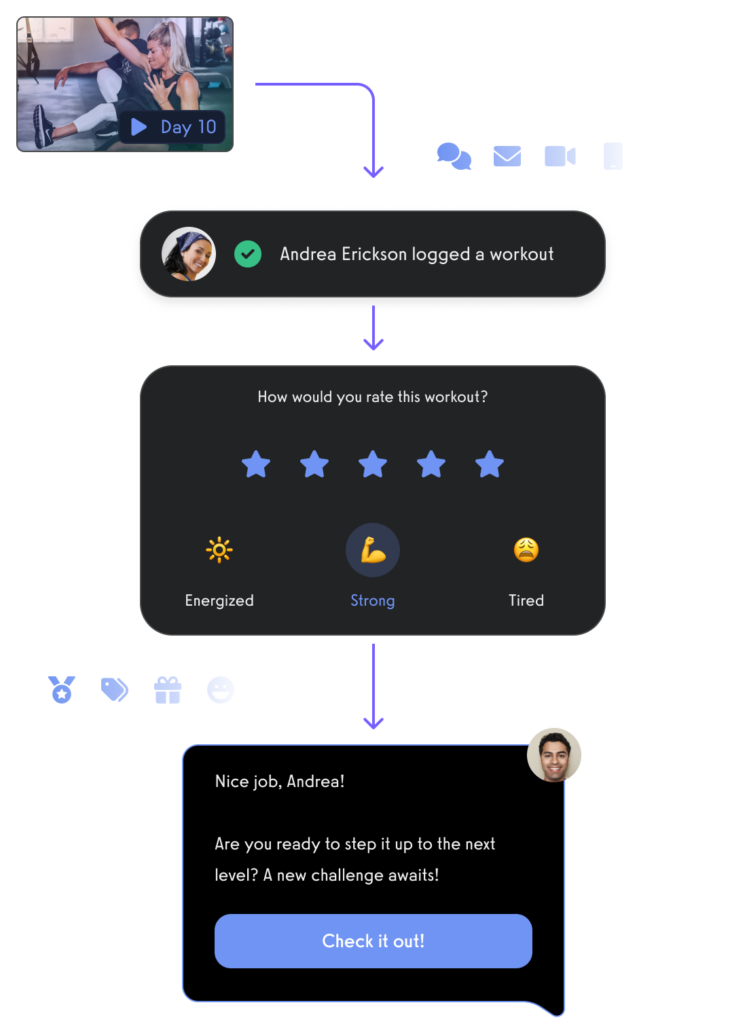
Manage leads with a fitness CRM.
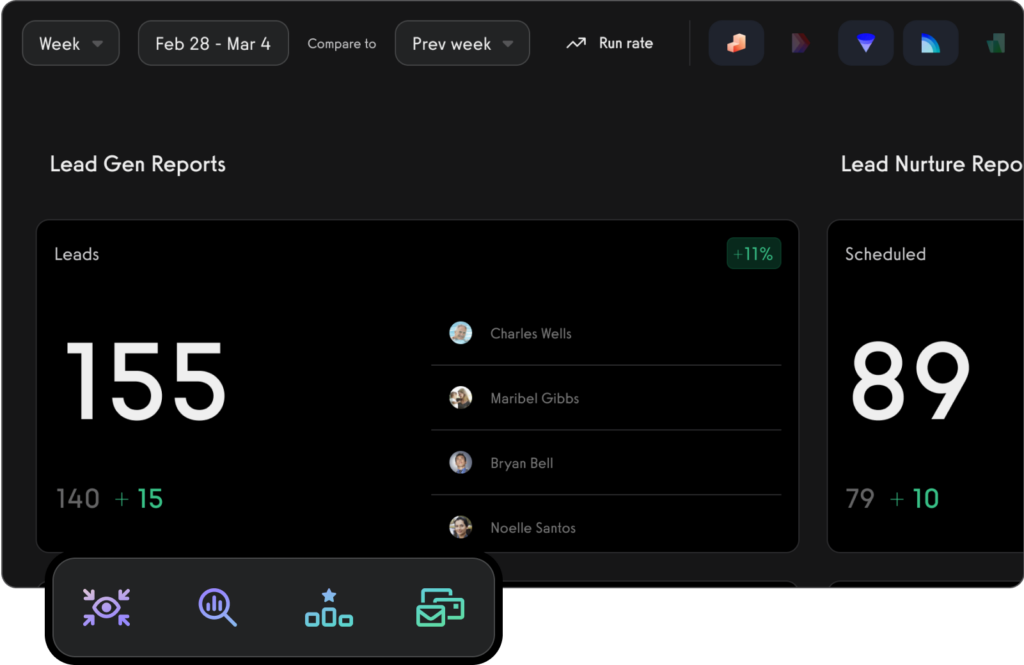
Create and send fitness assessments with ease.
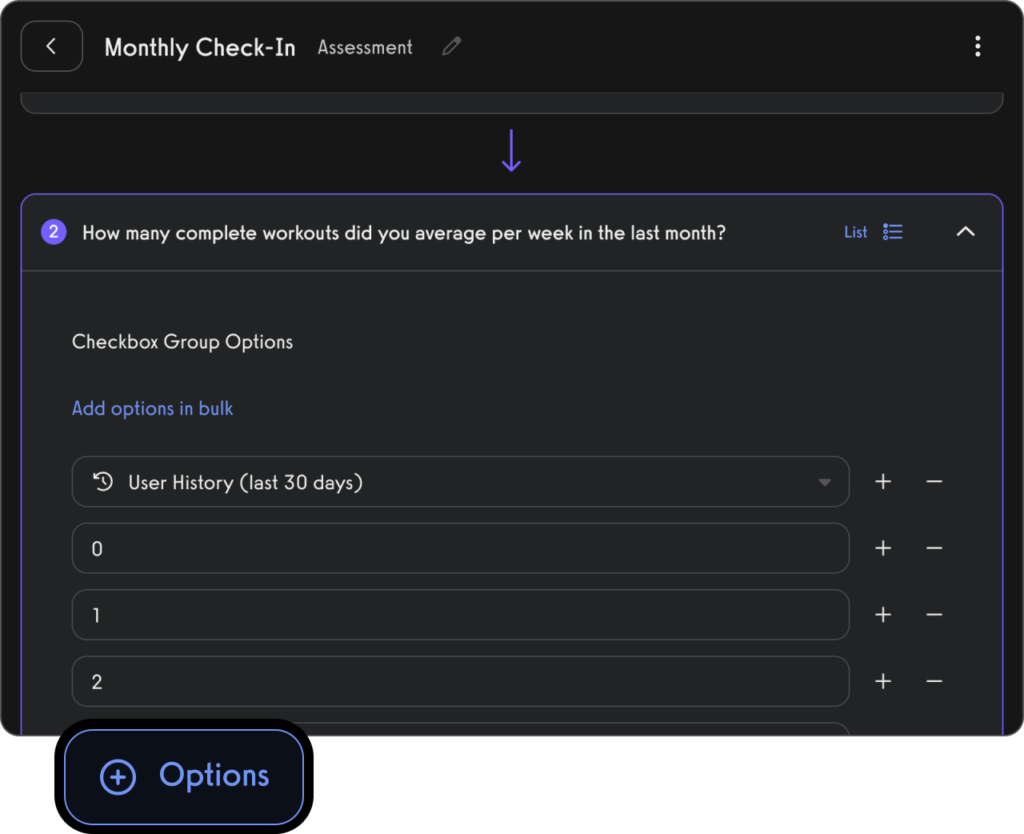
Use fitness habit tracking to inspire and motivate personal training clients (in-person and remote).

Use fitness progress photos to engage with clients.
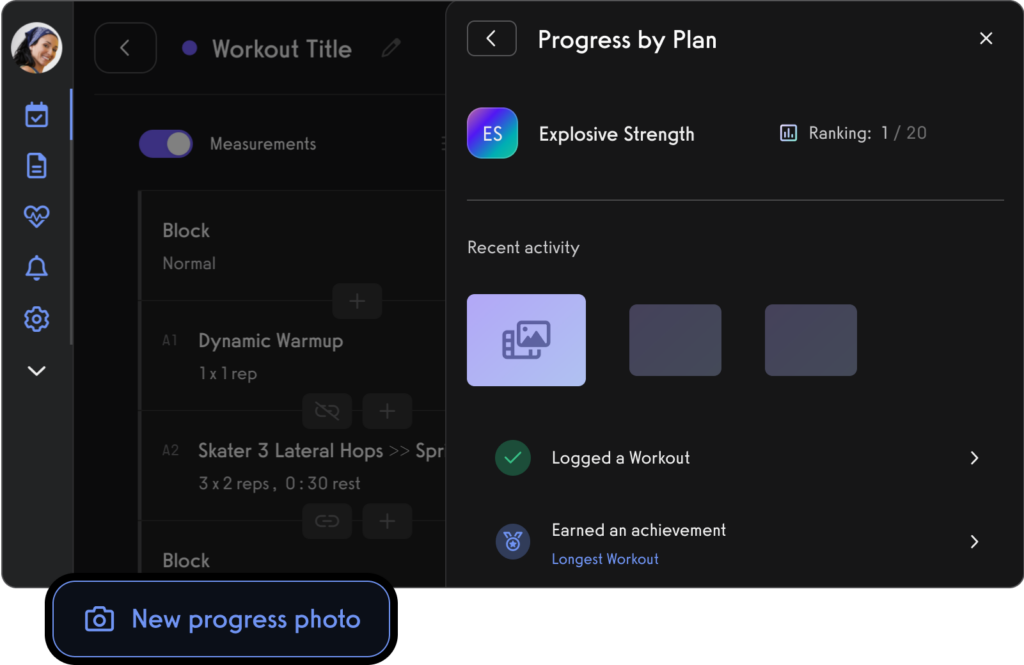
Use fitness leaderboards to track performance and inspire healthy competition.
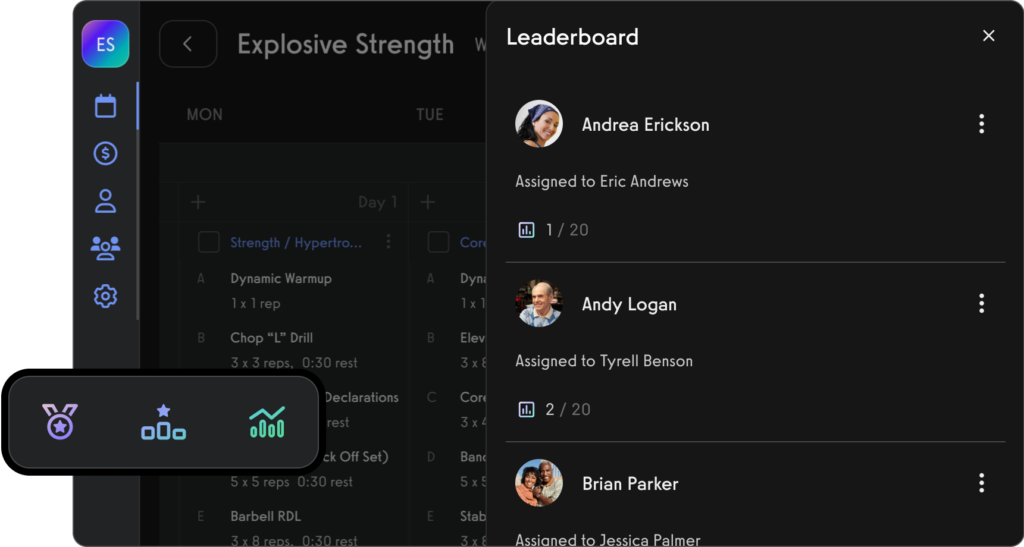
Use the exercise demonstration video library or create your own custom exercise demonstration videos.

Create workout plans for parents and dependents, teams and more.

Manage personal training clients with ease.

Book appointments for clients (Read More: Best Gym Booking Software)

Create classes and fitness groups

Manage fitness challenges (Read More: 100+ Fitness Challenge Ideas)
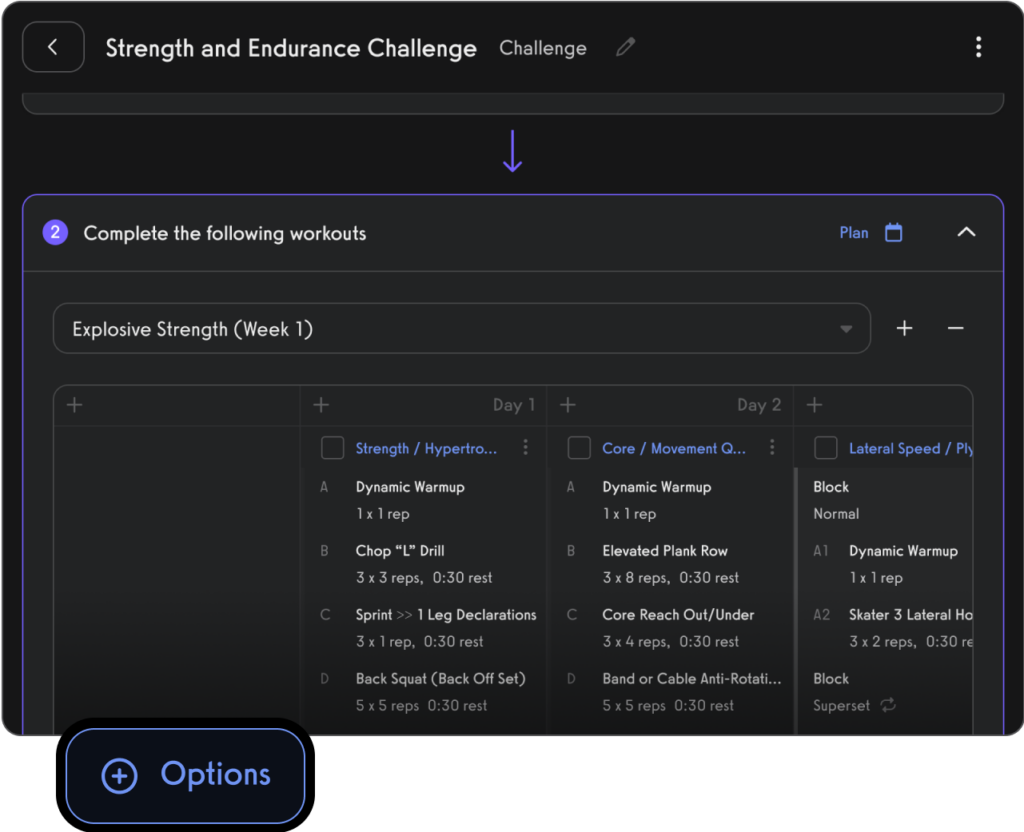
Process payments for open gym, classes, and personal training.

Communicate with gym members, athletes, team members, personal training clients, class members, parents, and dependents via SMS, email, and in-app push notification.
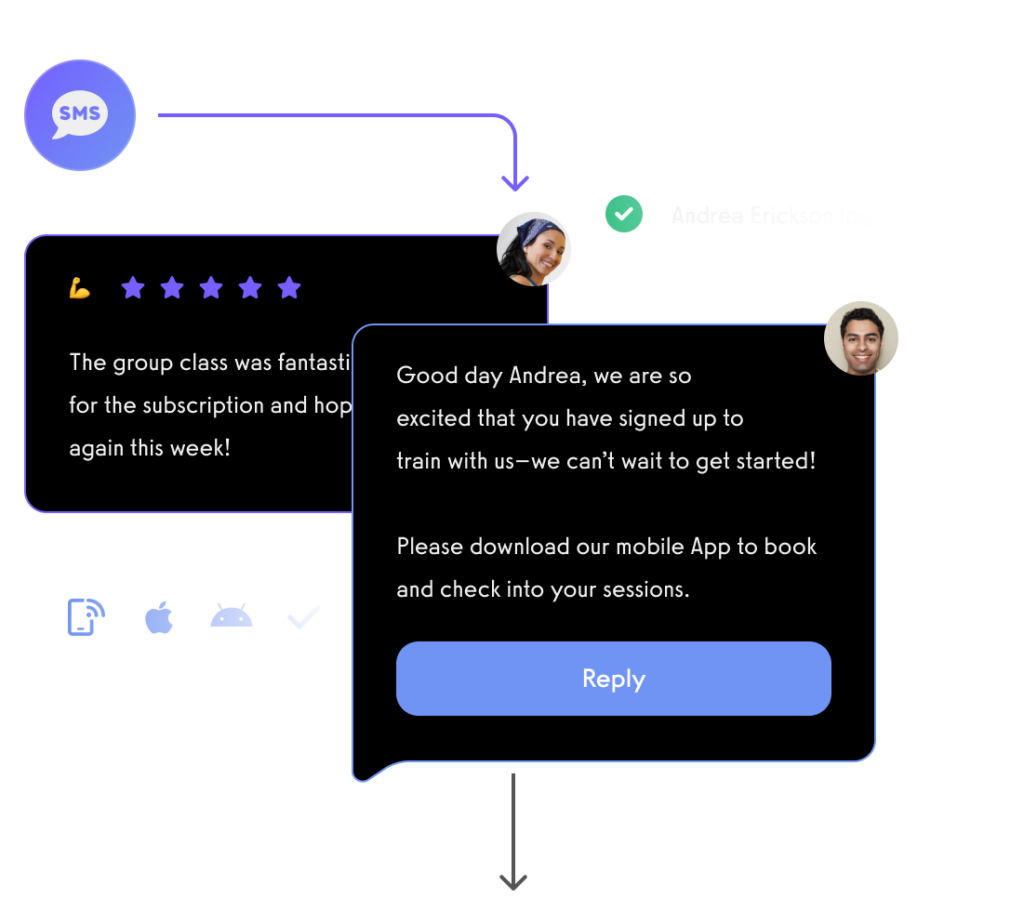
View performance over time, track personal records, and other fitness stats with performance reporting dashboards.
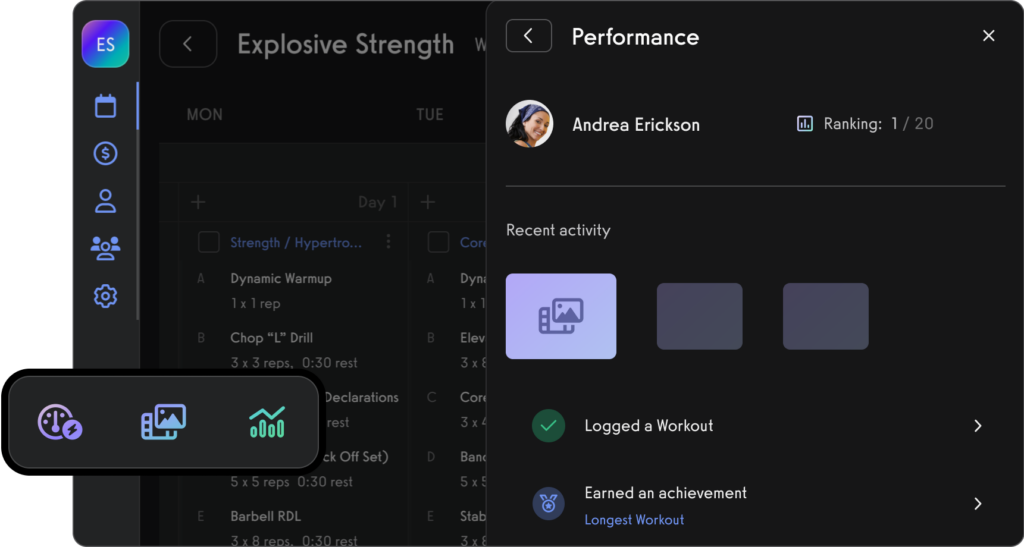
And of course, view all of your fitness business reports easily too.

All from your custom-branded fitness apps (Read More: Best Gym Mobile Fitness Apps Software)

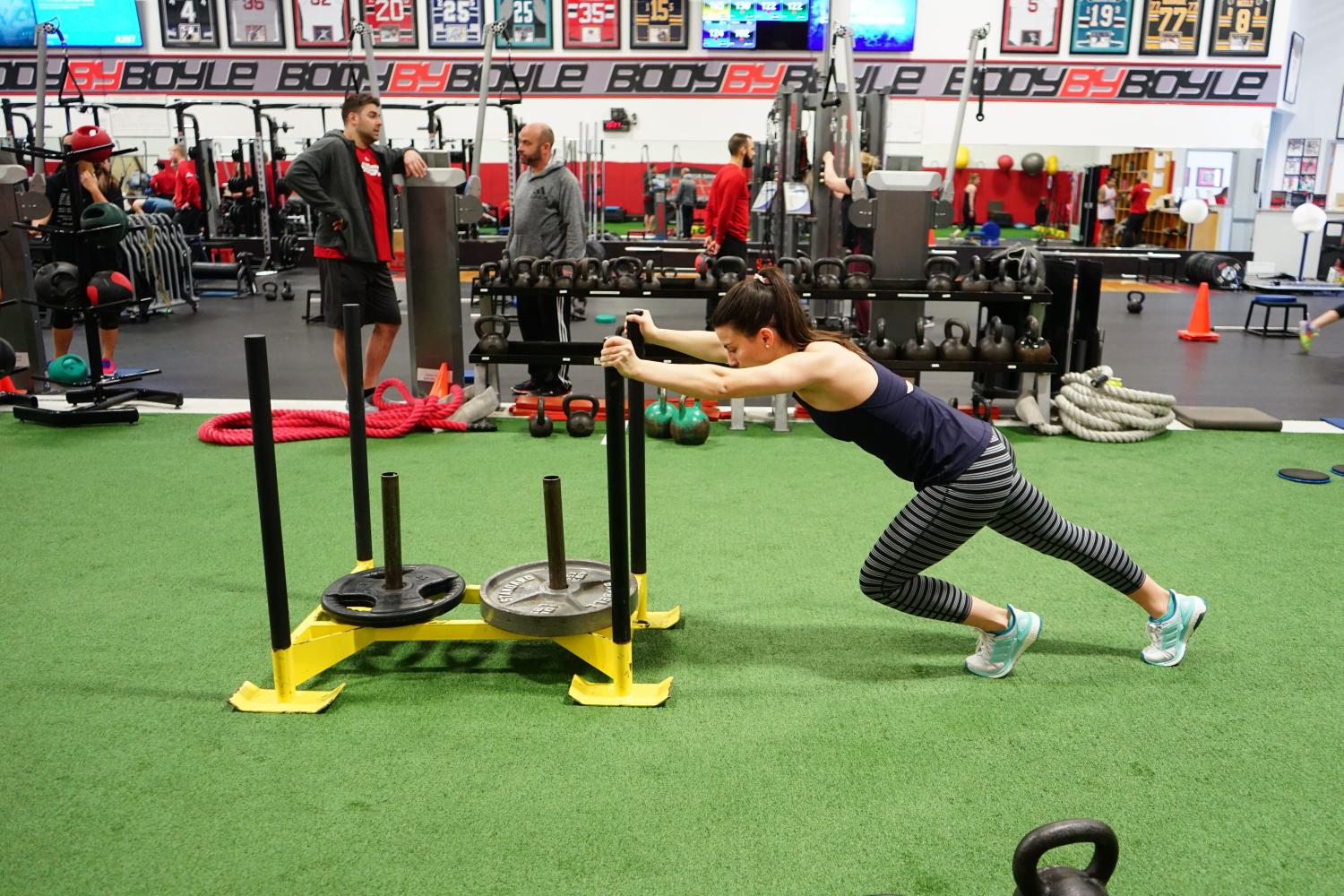
Want to learn how your fitness business can take it to the next level? Get a demo now!









